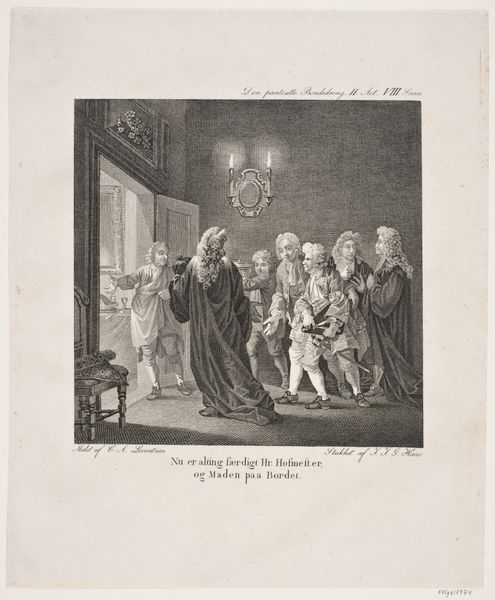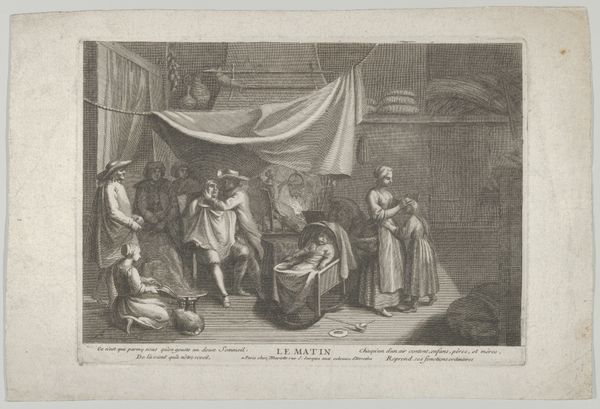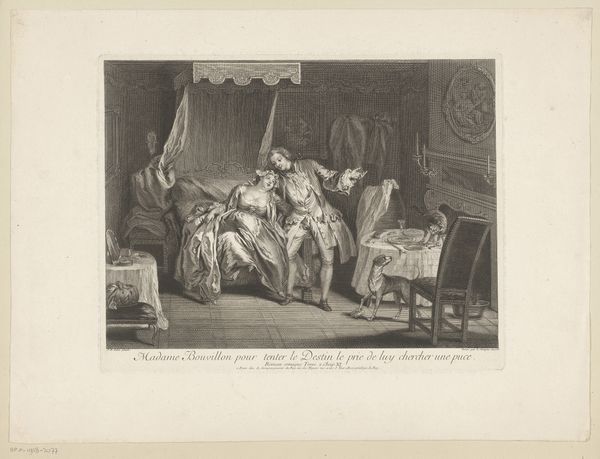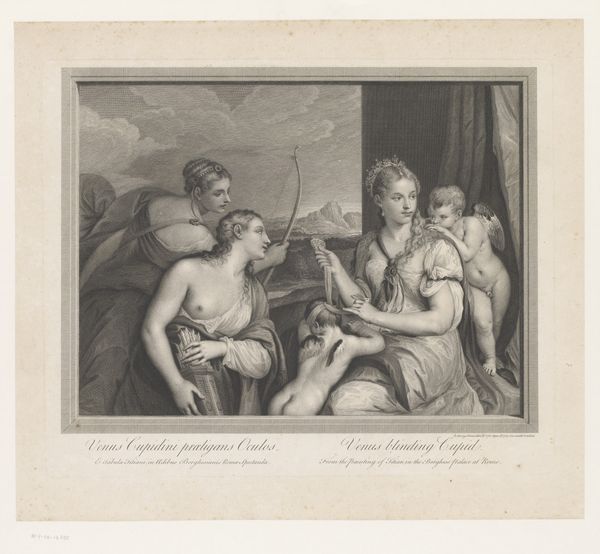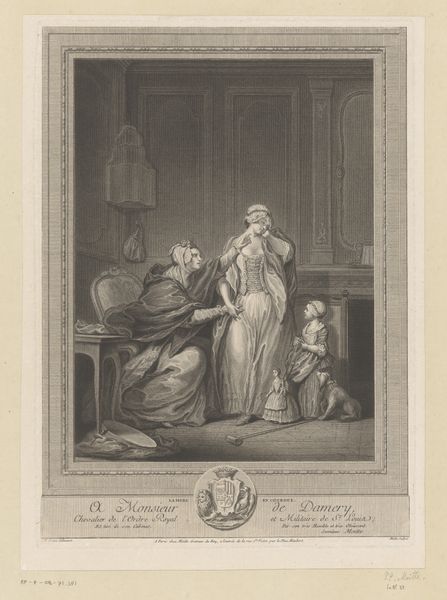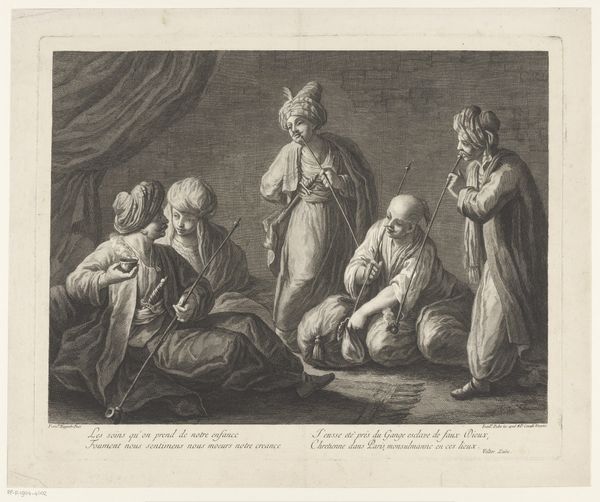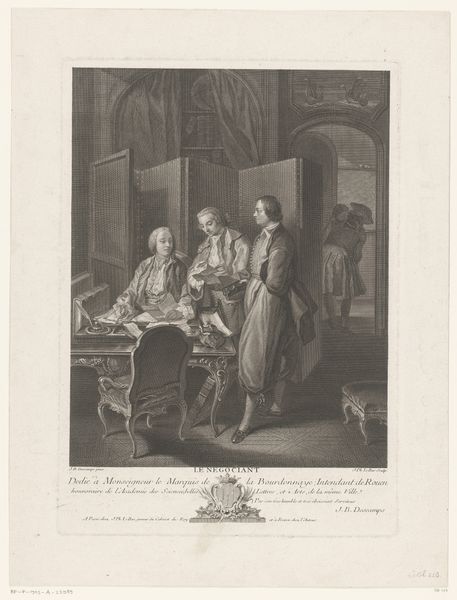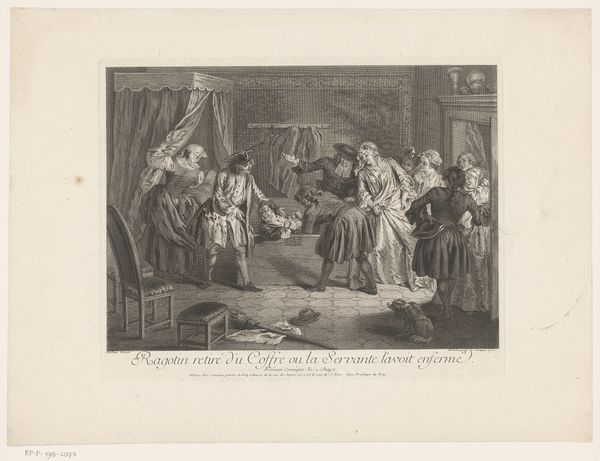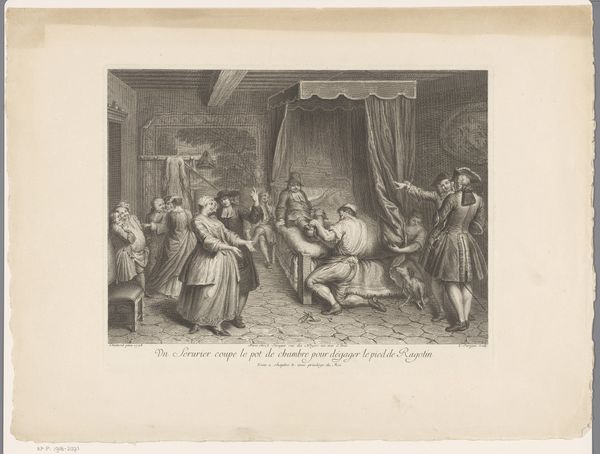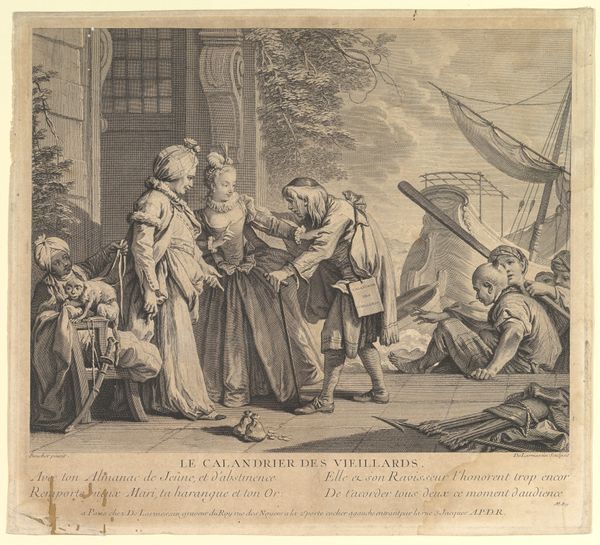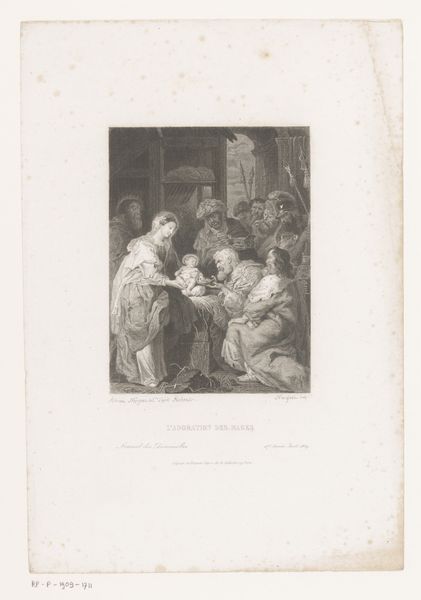
engraving
#
portrait
#
neoclacissism
#
old engraving style
#
group-portraits
#
history-painting
#
academic-art
#
engraving
Dimensions: height 270 mm, width 321 mm
Copyright: Rijks Museum: Open Domain
Curator: So, looking at this engraving, “Portrait of Benjamin West and his Family,” made in 1781 by D.P. Pariset after a work by Benjamin West himself, I’m immediately struck by the…seriousness. Artist: Seriousness is spot on! There's a stillness to the composition, like a family frozen in amber. Almost like everyone is holding their breath. But behind that first impression, you sense a subtle play about how this kind of official art actually portrays intimacy, especially for artists and families. Curator: Absolutely. Pariset's rendering, which closely follows Neoclassical trends, comes off like a meticulously constructed tableau vivant meant to demonstrate West's stature as a painter. We’re meant to consider how history-painting, even familial history, reflects social standing. And look at that dedication below – all that overt pandering to "all the Russia’s." Artist: The detail is captivating! Though a lot gets simplified in the engraving style, there’s also a softness. Take the mother, for instance – cradling her infant with such gentle lines. Then you have the arrangement: notice the father subtly standing just behind the others? And all the faces so deliberately directed our way? They draw me into thinking of the power relations inherent to representation and families at that time. It makes the engraving almost intimate but somehow cold. Curator: Right. We see how the genre demands formal dignity above all else. Academic art prized polish and technique as markers of the artist’s skill, so this image’s impact is in that careful presentation, in how he uses the established artistic languages. Think about who had access to art; who had money to hire D.P. Pariset! That sort of controlled performance speaks volumes about power and who’s holding it. Artist: It makes me consider how much intention the image-makers loaded the work with: everything seems so pointed, deliberate, as if no gesture, no glance escapes calculation. I see how this calculated portrayal reflects the family, Pariset, but above all, West himself, using an ideal to shape the visual impression of history. So interesting! Curator: And those tiny coats of arms below–don’t miss those symbols! Well, thinking about the place of images, even ones dedicated to imperial families, this print still encourages me to ask about the image economies of the late 18th century. It really calls to mind those intricate connections between artistic, political, and economic institutions that continue today. Artist: Definitely gives one a lot to ponder! It seems, doesn't it, to have many layers beneath the facade, speaking to how complicated the role of images are within any history or period of influence.
Comments
No comments
Be the first to comment and join the conversation on the ultimate creative platform.

